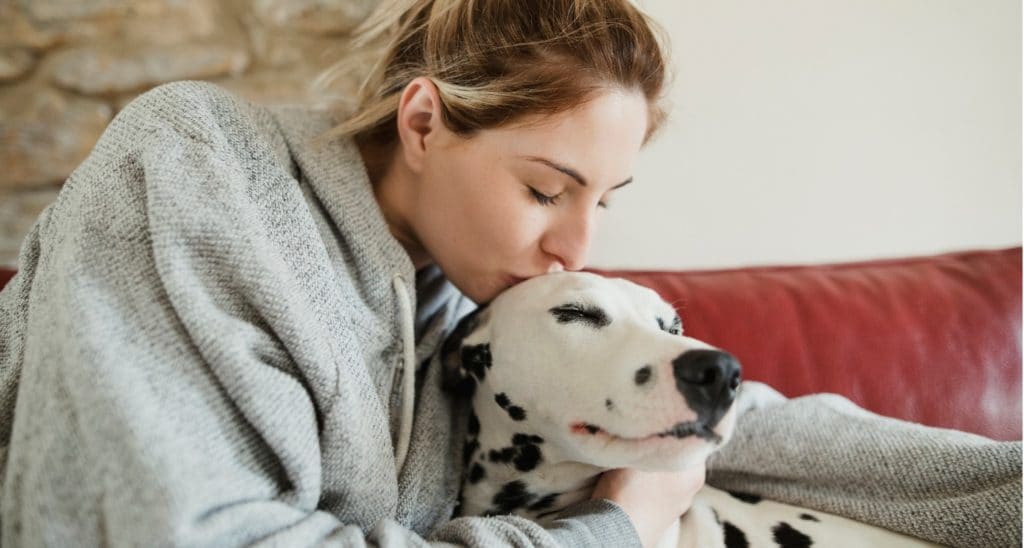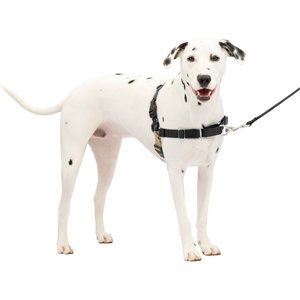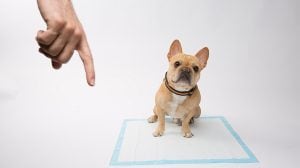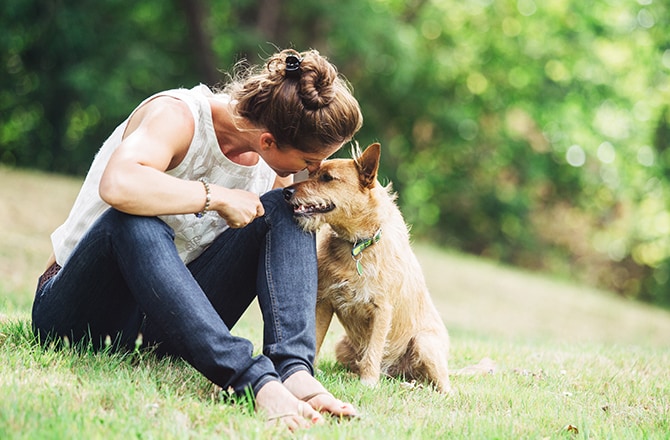Does your dog trust you? Do you know how to get a dog to trust you?
A dog who knows you have her back is likely to feel more at ease in her environment.
“Trust can also make specific situations more manageable,” says Haylee Heisel, a behavior consultant at Best Friends Animal Society in Kanab, Utah. “If you add a new dog or human to your family, your pup will need to learn to trust them.”
When you form a relationship based on trust, not only will those trips to the veterinarian likely become less stressful, but your bond with your dog will strengthen, too.
How to Get a Dog to Trust You
Getting your dog to trust you takes time and patience. It’s important that you work at your dog’s speed and go about it on her own terms. You also need to be consistent in your own behavior so your dog knows what she can expect from you.
Let Your Dog Come to You
“Building trust is letting the dog make the first move and letting [her] control [her] environment at first until [she] knows what to expect from those around [her],” says Terri Bright, Ph.D., BCBA-D, CAAB, director of behavior services at Massachusetts Society for the Prevention of Cruelty to Animals-Angell in Boston.
Leaning forward, bending over and placing a hand out for the dog to sniff, for example, is a terrible way to greet a dog you don’t know, she says.
“The dog can smell you from far away, and if [she] wants to greet you, [she] will approach you,” Dr. Bright explains. “If [she is] fearful, the last thing that will cause [her] to trust you is for you to get up close and personal in that way.”
If your dog is resting, call her over instead of approaching her, says Kelly Ballantyne, DVM, DACVB, owner of Insight Animal Behavior Services in Chicago.
“Like humans and most other animals, dogs don't like to be disturbed when they are resting, even if many may tolerate it,” she explains. “Inviting your dog to interact rather than invading her space will give your dog the choice of whether or not to interact.”
This will make it more likely that your dog will enjoy the interaction and decreases the chance that your pooch will learn to growl, snap or bite to tell you to give her space.
Engage in Trust-Building Activities
Trust takes time and effort. Offering your pup things she enjoys, like food, dog treats, toys and walks, is another way to develop a stronger bond, Dr. Heisel says.
“Each dog is going to find different things rewarding,” she says. “Some dogs may prefer toys over food, so it’s important to look at the individual dog to determine what [her] preferences are.”
Another way to build trust is to have fun with your dog, Dr. Heisel recommends.
“Engaging in activities like dog sports—even if it’s informally in your backyard—teaching them tricks and doing fun things with them will strengthen your bond,” she adds.
Be Consistent
Consistency is essential when it comes to building trust.
“Imagine if you went to work one day and your boss said you had a different job and they weren't going to pay you,” Dr. Heisel says. “We probably wouldn't trust them after that!”
We all have a tendency to “explain” our inconsistencies to our dogs using spoken language, which they don't understand, Dr. Heisel explains. When we are inconsistent, we become unpredictable, which erodes trust because our pets no longer know what to expect.
How to Get a Scared Dog to Trust You
Traumatized dogs, such as shelter dogs, may need more time to learn to trust you.
“Dogs who have lost their homes, especially, need to be able to trust the people they live with,” Dr. Heisel says. “They have likely been traumatized in transport, as well. It can take three to six months for a dog to settle into [her] new environment, and [her] behavior may markedly change during that time.”
Dr. Heisel recommends starting rewards-based training immediately. It could be as simple as asking her to sit for a treat a few times a day. Here are some rewarding tips from Dr. Heisel:
- Be cautious of calories when offering dog treats as rewards. Offer smaller treats, like Crazy Dog Train-Me! mini dog treats, which are only 1½ calories per bite.
- Consider offering toys as rewards. Play fetch with the Chuckit! Classic launcher. Or engage in a game of tug-of-war with Tuffy's Ultimate Tug-O-War dog toy.
- When using walking as a way to strengthen your bond, suit her up in comfort. A harness, like the PetSafe Easy Walk dog harness, attaches near the dog’s chest to avoid pulling at her throat.
“If adopters have any concerns, they should arrange to work with a rewards-based trainer or a qualified certified applied animal behaviorist or veterinary behaviorist,” Dr. Bright says, adding, especially “if anxiety, aggression or any behavior is severely concerning.”
How to Tell if Your Dog Trusts You
The key to knowing if your dog trusts you is through her body language. Dog behaviorists recommend learning to recognize the nuances of a dog’s body language before a behavior escalates.
A dog who is growling or snapping almost certainly has been communicating her discomfort beforehand. However, the missed signals, such as backing away, pushed her to escalate to growling behavior to be heard, Dr. Heisel explains.
“Growling is similar to a person who is starting to feel very upset and desperate to be heard,” she says, “while more subtle dog body language might be more akin to, ‘Please stop, that makes me a bit uncomfortable.’”
Once you learn to identify what your pup’s body language means, look for sources of stress or conflict in her environment, Dr. Ballantyne says.
“Depending on what the trigger is, you may want to move your dog away [from it] to help her feel more comfortable,” she says. “And if you're the one who is worrying her, stop the interaction and give your dog some space.”
It’ll be easier to gain your dog’s trust if she knows you won’t place her in situations that she isn’t ready for, says Dr. Victoria Cussen, director of the ASPCA's Anti-Cruelty Behavior Research.
“For example, you may want your dog to learn to do something, like swim, but if she is showing you signs that she’s not ready, such as backing away in fear, it’s important not to push her,” Cussen says.
Gaining your dog’s trust takes time and effort but can result in a happier, healthier pup and a deeper human-animal bond.
“Part of the joy of having a dog is building a relationship with another animal,” Dr. Ballantyne says. “Relationships built on trust are the healthiest and most enriching for both parties involved.”
By Paula Fitzsimmons
Like this story? Check out more of our favorite reads:
Share:













